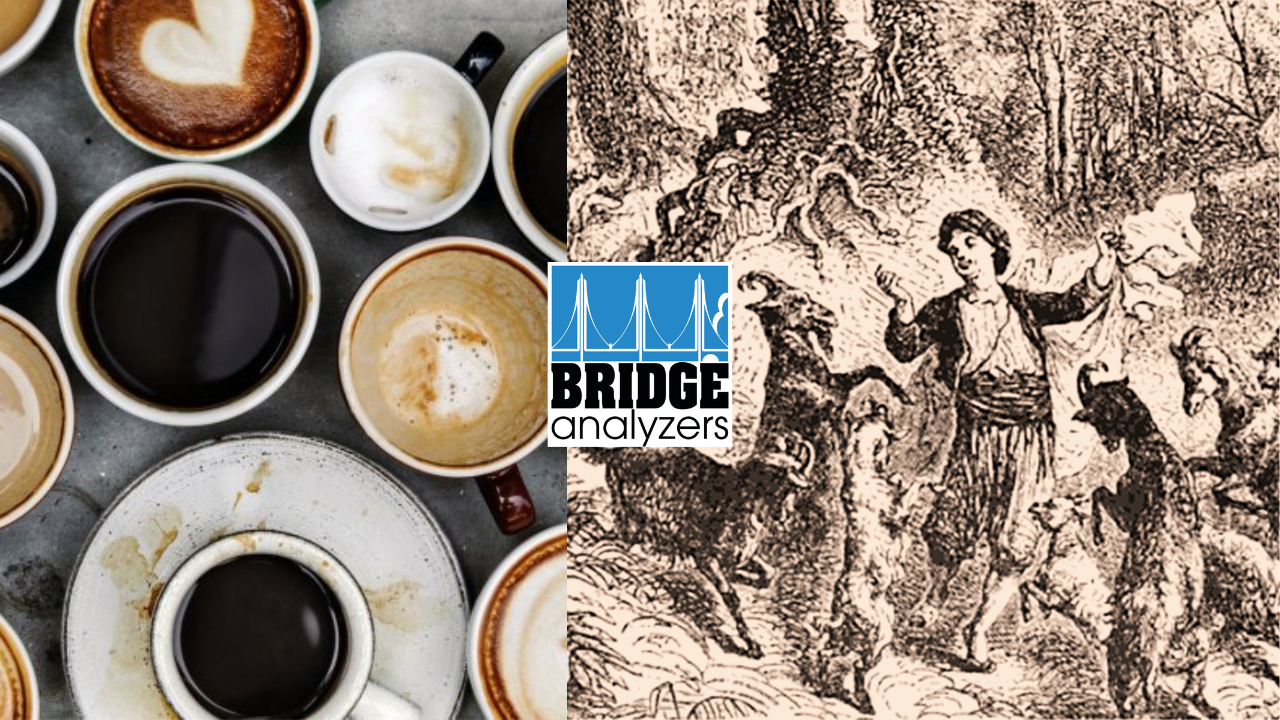One of the most popular beverages consumed worldwide is coffee, and both consumers and growers place a high value on the finished product’s quality. The history of quality control in the coffee industry dates back to the earliest periods of coffee commerce and cultivation, and it has developed over time to encompass a number of techniques for guaranteeing that the coffee that consumers receive is of the best possible quality.
According to folklore, a goat herder named Kaldi discovered the stimulating properties of the coffee plant when he observed that his goats became more alert after eating the berries in the 9th century in the Kingdom of Kaffa in Ethiopia.
Antoine Galland (1646 – 1715) the French Orientalist and archaeologist, most famous as the first European translator of One Thousand and One Nights[1] tells the story of the goat herder Kaldi this way:
A young goatherd named Kaldi noticed one day that his goats, whose deportment up to that time had been irreproachable, were abandoning themselves to the most extravagant prancings. The venerable buck, ordinarily so dignified and solemn, bounded about like a young kid. Kaldi attributed this foolish gaiety to certain fruits of which the goats had been eating with delight.
The story goes that the poor fellow had a heavy heart; and in the hope of cheering himself up a little, he thought he would pick and eat of the fruit. The experiment succeeded marvelously. He forgot his troubles and became the happiest herder in happy Arabia. When the goats danced, he gaily made himself one of the party, and entered into their fun with admirable spirit.
While Galland’s apocryphal anecdote may or may not be factual, it is true that over the years, as coffee’s popularity grew throughout the world, it swiftly turned into a necessary good and a significant source of wealth for many nations. In order to ensure that the coffee being sold was of a high caliber, quality control of the product soon became a requirement.
Grading systems were one of the first methods used to control coffee quality. The first systems of quality control were based on the size, shape, and other physical properties of the coffee bean. The earliest grading system was created in 1711 in Mocha, Yemen, and was used to divide beans into groups according to their size, shape, and color. Later, other coffee-producing nations created their own grading schemes. For example, Ethiopia and Brazil both utilized schemes based on color and aroma to classify their beans, whereas Brazil employed a system based on size and form.
The demand for more advanced techniques of quality control grew during the 19th century as coffee trade and cultivation grew. In order to promote and control the quality of coffee, a number of organizations and associations were established in the 18th and 19th centuries as consumption of the beverage increased in Europe and the Americas. These organizations included the Brazilian Coffee Institute, the New York Coffee Exchange, and the London Coffee Trade Association.
The procedures employed to guarantee the quality of the finished product changed along with the growth and evolution of the coffee business. The Specialty Coffee Association of America (SCAA) was established in the early 20th century with the intention of advancing and raising the standard of specialty coffee. The Coffee Quality Standards, devised by the SCAA and still in use today, are a set of criteria for measuring the quality of coffee.
The coffee business has recently placed a fresh emphasis on sustainability and ethical sourcing, and quality control procedures are increasingly incorporating these concerns. Today, a lot of coffee growers and roasters use sustainable agricultural techniques and seek to ensure that the coffee they produce is sourced ethically. In order to increase the effectiveness and precision of quality control processes, technology has also become more widely used in the coffee sector, including sensors and machine learning.
As a whole, coffee quality control has a long and rich history that dates back to antiquity. The Specialty Coffee Association of America and other organizations’ present standards and guidelines, as well as the initial attempts at grading and classification of coffee in the 16th century, have all contributed to the highest-quality coffee being produced today.
Where We Come In: Bridge Analyzers Delivers Coffee Quality Control through Headspace Gas Analysis
Bridge Analyzers Modified Atmosphere Packaging (MAP) gas analyzers are used by our coffee customers during their Quality Control testing processes to confirm that their finished, packaged product is fully sealed from air intrusion and incorporates the proper gas mixture necessary to meet the desired levels of freshness, flavor, and aroma that they have worked so hard to put into their coffee. Some of our favorite coffee customers include: Circles Coffee, Kicking Horse Coffee, Blue Bottle Coffee, African Coffee Roasters, Portland Coffee Roasters, Royal Cup Coffee, and many more.
At Bridge Analyzers we are honored to have the opportunity to help some of the best coffee companies in the world innovate and discover new ways of delivering high quality coffee products to their consumers.
If you want to learn more about how we can help you, feel free to contact us at sales@bridgeanalyzers.com
[1] Jorge Luis Borges has suggested that Romanticism began when Galland’s translation was first read.
